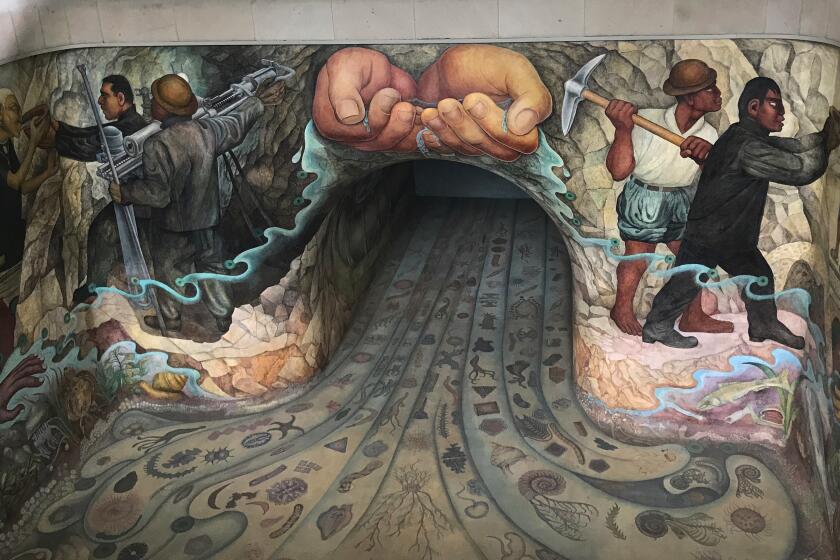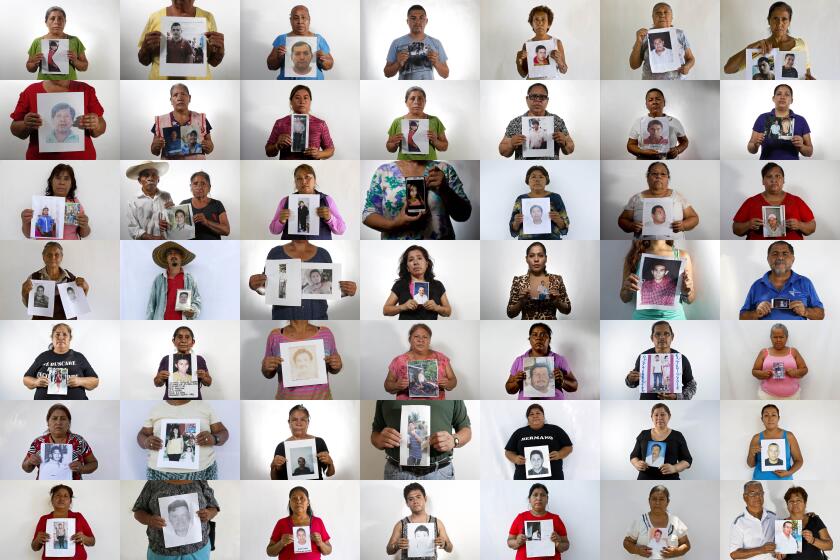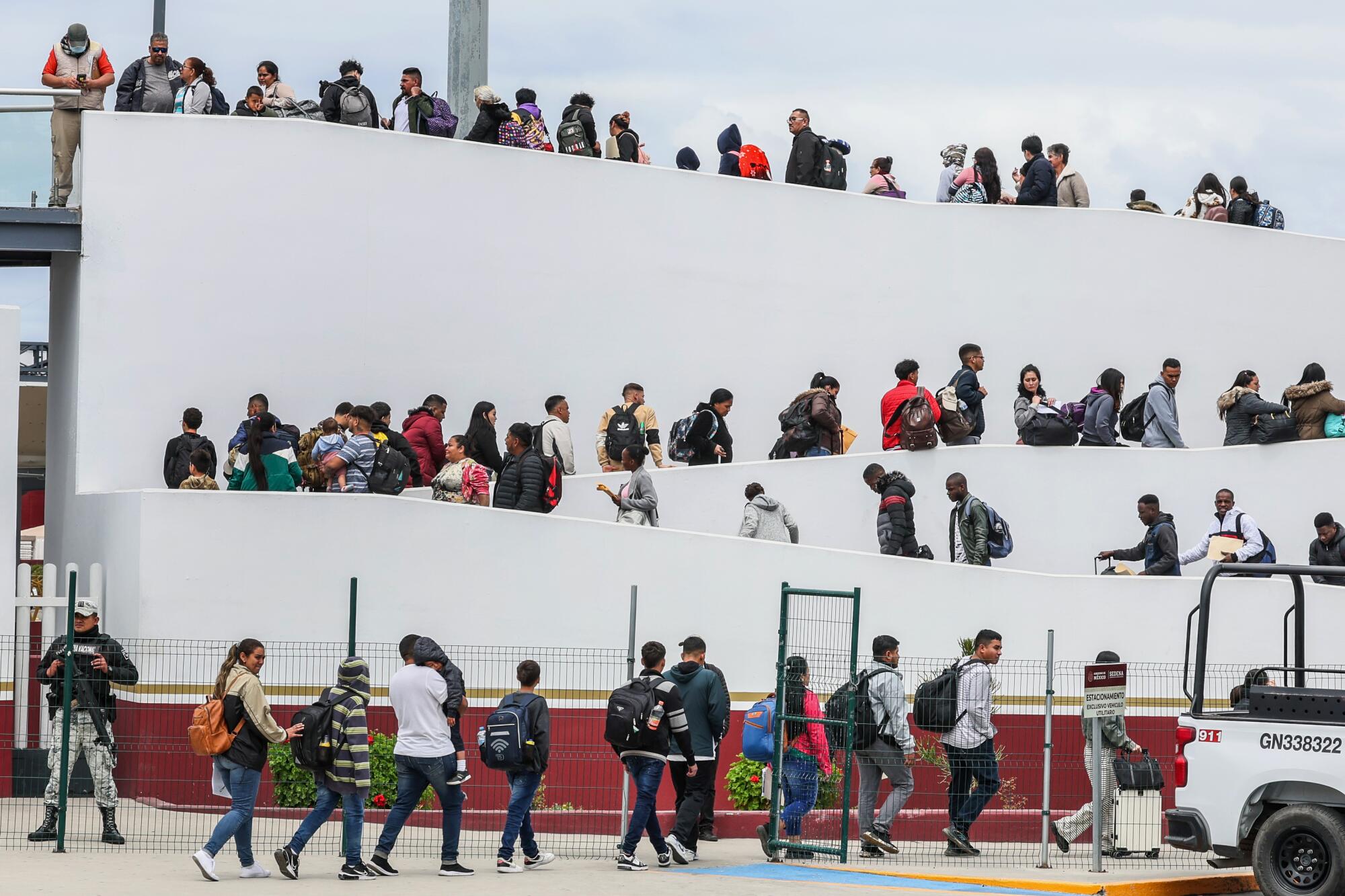
- Share via
CIUDAD JUÁREZ, Mexico — Having fled his native Venezuela, Luis Guerrero was living in Colombia when he heard about a legal way to get into the United States: a smartphone app created by the U.S. government.
Five months later — after making it through a jungle trek, a kidnapping ordeal and a long wait in Mexico — he, his wife and their 11-year-old son lined up with scores of other asylum seekers to cross a bridge into Texas for immigration interviews scheduled through the app.
As the family inched toward the gate, Guerrero explained that friends had encouraged them to cross the border illegally and turn themselves in to claim asylum.
“But, no,” he said. “I wanted to do it the correct way.”
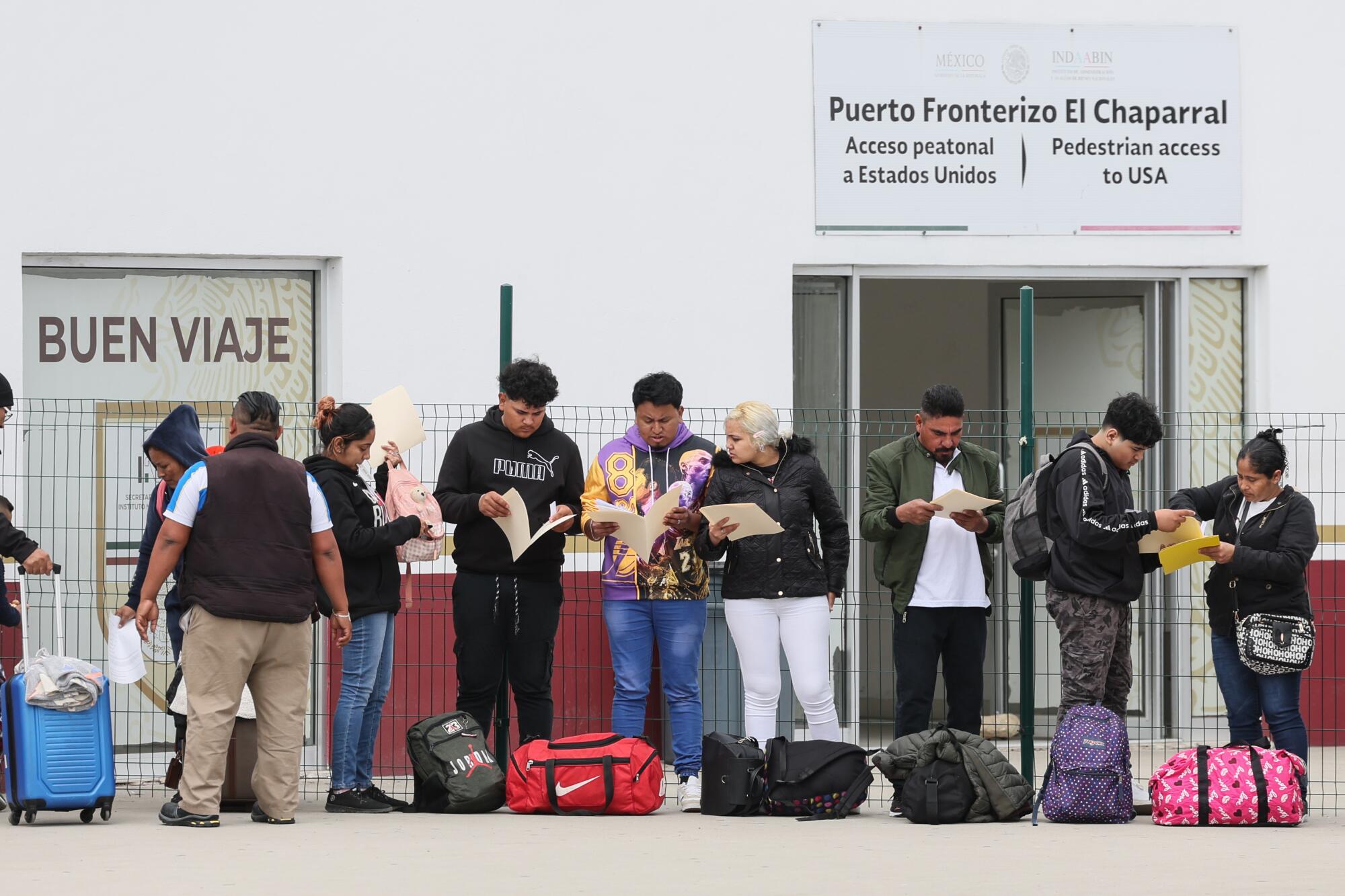
A few hours later, an agent from U.S. Customs and Border Protection handed Guerrero a slip of paper with a court date for 2025.
Then they headed to a bus station with the aim of making it to Houston, where they planned to live with friends while Guerrero sought government permission to work and prepared an application for asylum.
Their story is not uncommon these days as tens of thousands of migrants arrive at the border each week. But amid the divisive debate surrounding immigration policy in a U.S. election year, there is no consensus on what lesson to draw from the experiences of the Guerrero family and others in similar predicaments.
The government app — known as CBP One — has become a key piece of that debate, and a sort of Rorschach test.
The Biden administration lauds the app as part of the solution to the border crisis.
Immigrant advocates say CBP One is glitch-prone and reduces the right of asylum to a lottery while forcing migrants into a dangerous waiting game.
Republican lawmakers denounce the app as an “open borders” ploy that encourages more migrants to head for the United States.
The challenge in Mexico City, built amid lakes by the Aztecs, had long been getting rid of water, not storing it. Now its taps are running dry.
: :
The app’s inception dates to the final months of the Trump administration, which launched it to help prevent backups of ordinary travelers entering the country legally.
After downloading it to their phones and entering their passport information, foreign nationals could use CBP One to smooth their way through border crossing and airports.
At the same time, President Trump was invoking a public health rule known as Title 42 to turn away large numbers of asylum seekers entering the country illegally.
President Biden came to office vowing to impose a more “humane” immigration policy. But illicit border crossings soon skyrocketed, creating scenes of border chaos, inundating already overwhelmed immigration courts and fueling criticism of the White House.
Fearing a new border crush as they prepared to lift Title 42, Biden officials seized upon the previously obscure CBP One, announcing last May that asylum seekers would be required to schedule appointments at the border and use the app to do so.
Migrants must reach central or northern Mexico before the app will even let them try.
The administration argues that the app discourages illegal crossings, allows for advance screening and frees officers to seize narcotics, arms and cartel cash.
1
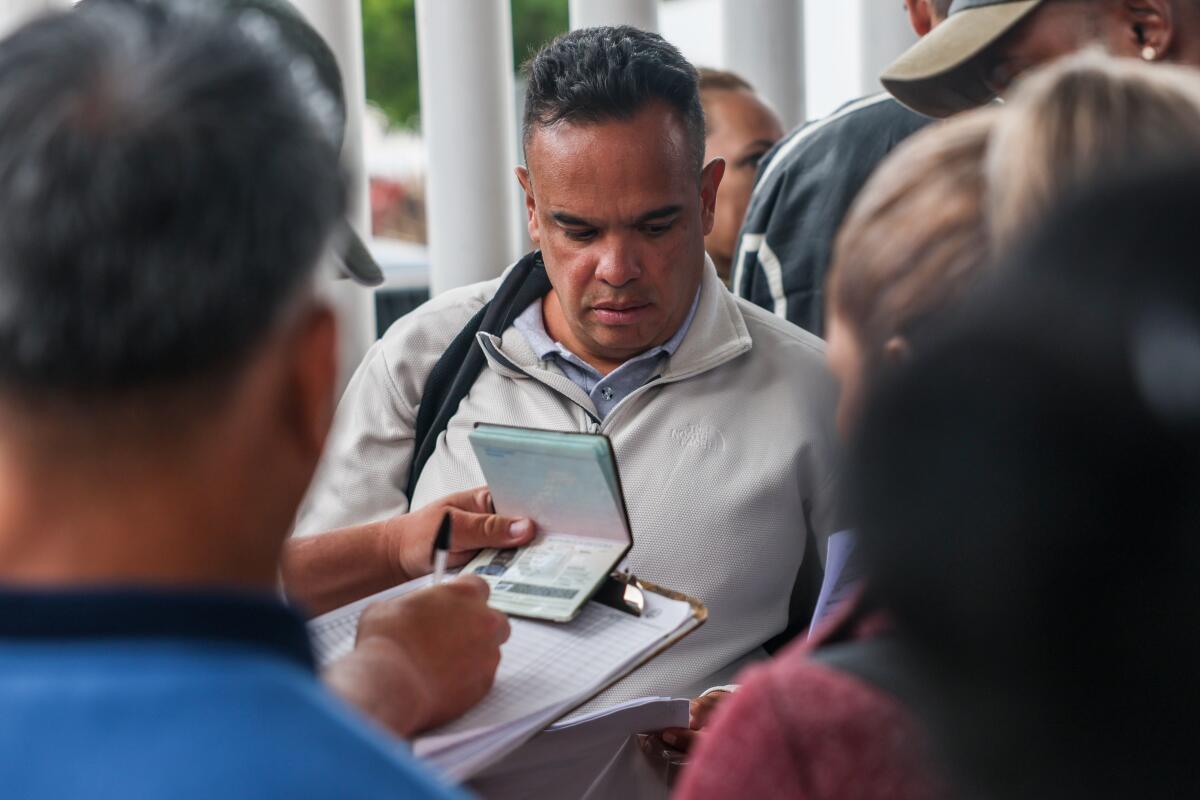
2
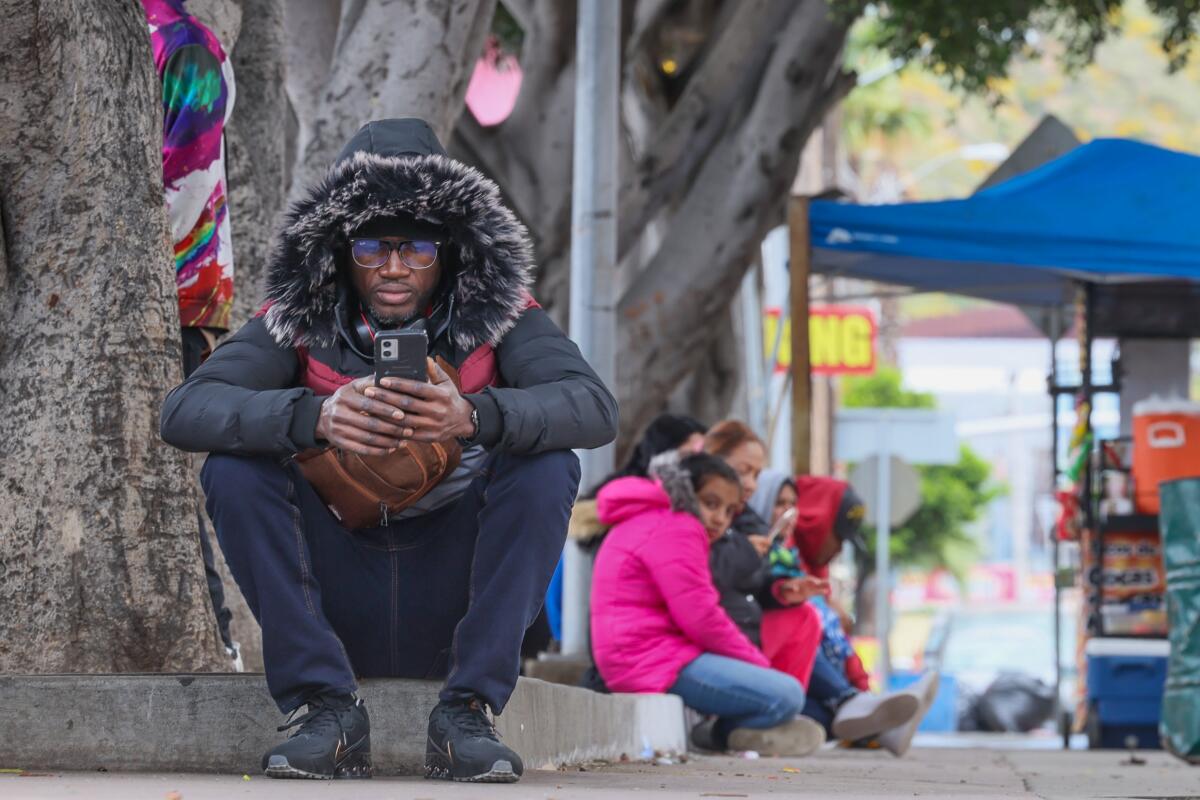
3
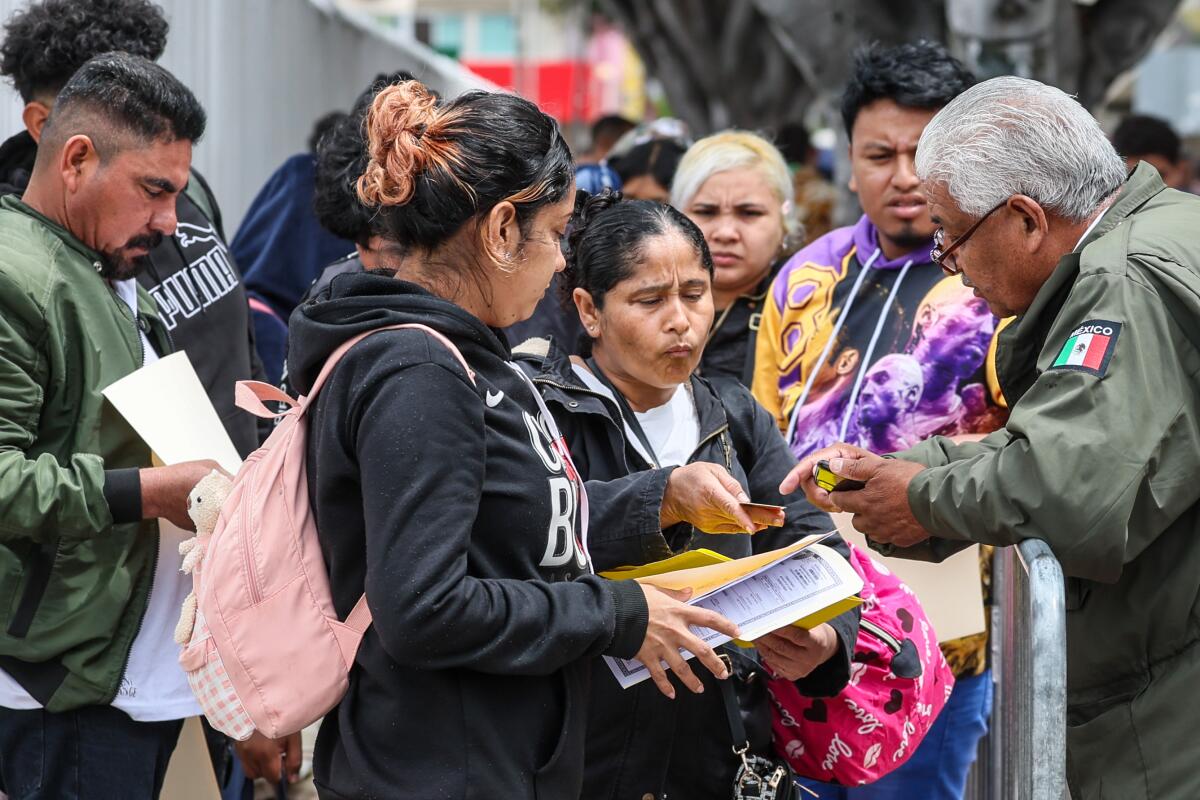
4
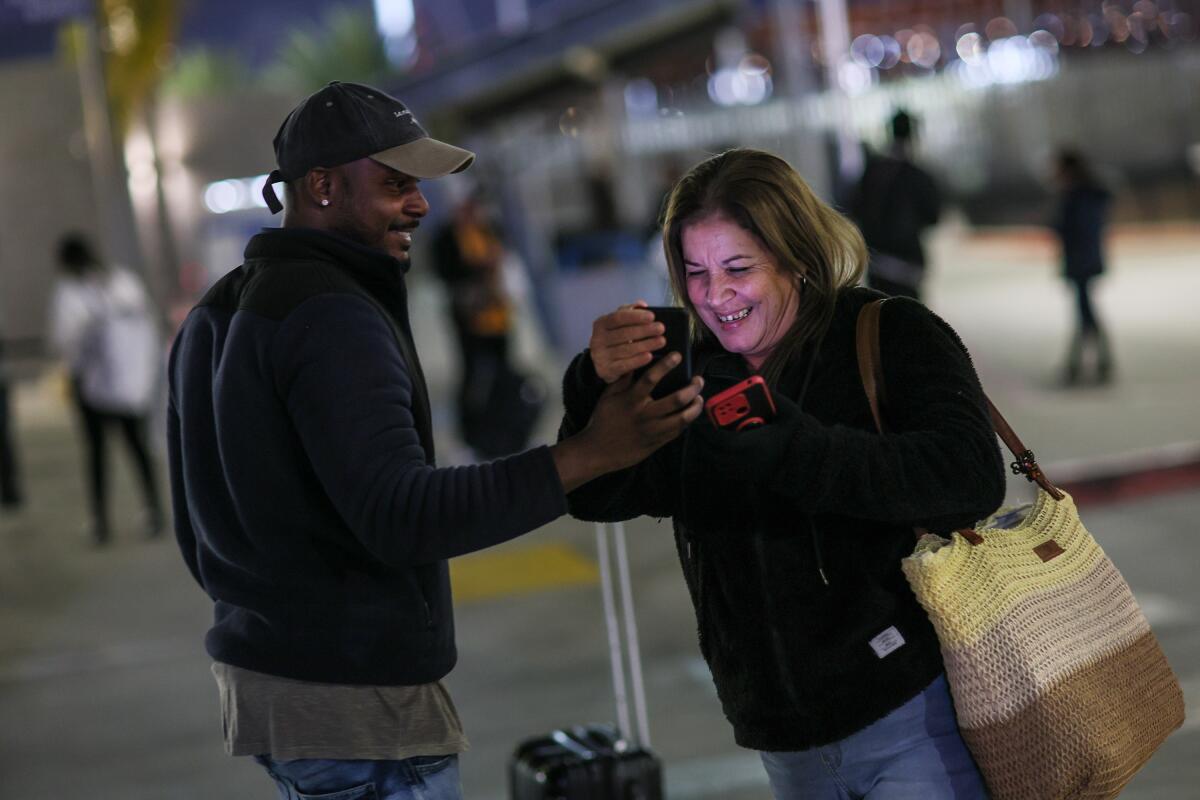
1. A Mexican official checks a man’s documents as he waits in line. 2. Lamy Robenson pass the time with his phone as he joins hundreds of asylum seekers who wait in line to interview with U.S. customs. 3. Hundreds of asylum seekers who used a CBP phone app to make an appointment, wait to for a scheduled interview with U.S. border agents at the San Ysidro Border Crossing. 4. Caridad Felipe Hernandez from Cuba, admires a photo taken by Adrian Moreno, also from Cuba, minutes after they entered the U.S. seeking asylum via a phone app.
“I can highlight a number of instances over the last 10 years where migrants showing up at our ports of entry without any advance information quickly overwhelm our teams,” Diane Sabatino, acting executive assistant commissioner for the CBP’s office of field operations, testified in March at a congressional hearing about the app.
To encourage use of the app, the government has made it increasingly difficult for migrants to walk up to border crossings and request asylum. Border agents routinely turn away “walk-ins.” And entering the country illegally can endanger future asylum claims.
Each day the app is used to set up 1,450 appointments along the Southwest border. The greatest share of appointments go to people from Venezuela, Haiti and Mexico.
Since the beginning of last year, migrants have used the app to make nearly 550,000 appointments.
Critics say the government of Mexican President Andrés Manuel López Obrador is trying to downplay how people have disappeared in recent years.
: :
Despite those numbers, immigration advocates say the app is inadequate.
“The CBP One app cannot and should not be the sole way for people to seek safety in our country,” said Amy Fischer, director of refugee and migrant rights at Amnesty International USA, which on Thursday released a report titled “CBP One — A Blessing or a Trap?”
Some migrants fail to make appointments because they lack smartphones or regular internet access, or because the app crashes or grants too few appointments to meet the demand.
The app only schedules appointments within three weeks. If nothing is available, migrants have little choice but to try again the next day.
As a result, the advocates say, thousands of people have been left stranded in Mexico for months, dodging cartel gangsters, crooked cops and other criminals.
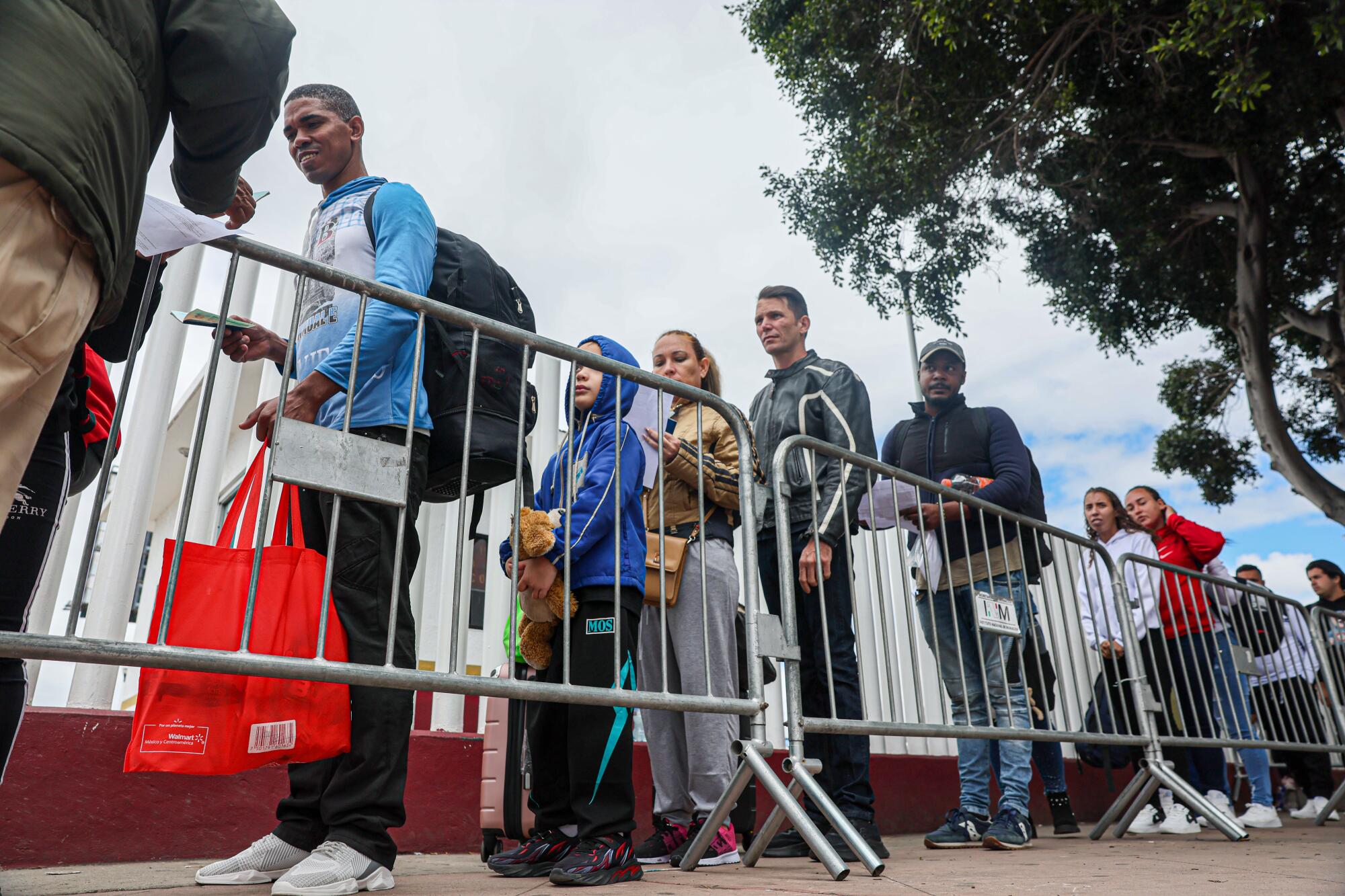
“Using a smartphone application sanitizes things and makes it feel like it’s safe and unbiased,” said Ari Sawyer, a border researcher for Human Rights Watch. “But, on the contrary, it’s abusive and putting people in serious danger.”
After fleeing her home in the violence-scarred Mexican state of Michoacán, María Medina, 27, said she took her two young children to the U.S. border last month in hopes of claiming asylum.
“They wouldn’t let me in,” she recounted.
Instead, she was told she needed to make an appointment using the app. She said she didn’t know what it was. Now she was stuck in Tijuana.
Mónica Esmeralda, 25, said she and her family fled to the border in November after receiving threats from a gang that extorts money from businesses in her hometown of Ayutla de los Libres in the Mexican state of Guerrero.
“They said that if we didn’t pay they would kidnap my daughter or one of my nieces,” Esmeralda said. “We decided to leave.”
Four months later, she and her husband and 2-year-old daughter, three nieces and a nephew were living in a shelter in Ciudad Juárez, constantly refreshing the app.
“No appointment yet,” she lamented.
When Guerrero, the Venezuelan migrant, arrived in Mexico, he thought the hardest part of his trip was behind him. His family had walked 60 miles across the Darién Gap — the jungle strip between Colombia and Panama — and then traversed Central America.
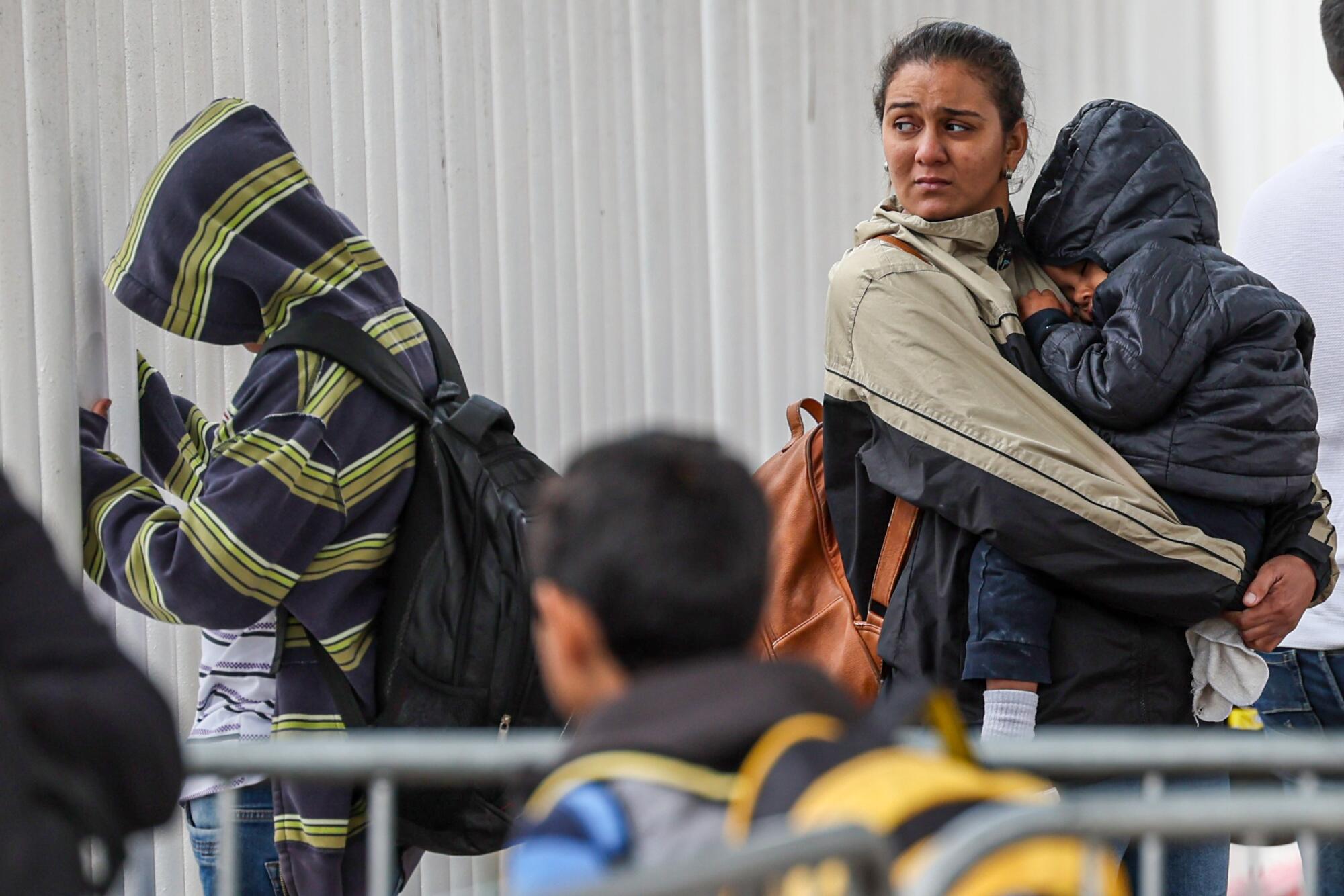
For weeks he logged into the app from Mexico City in hopes of making an appointment. But when he finally secured one for Dec. 26 in the Texas border city of Laredo, things did not go as planned.
Minutes after arriving at the airport on the Mexico side of the border in Nuevo Laredo — a cartel hub notorious for shake-downs and abductions of migrants — Guerrero said he and his wife and son were shoved into a vehicle and taken to a cartel safe house.
Guerrero said the kidnappers demanded $800 a person to release them.
“We told them we didn’t have the money,” he said. “And we didn’t have any family in the United States or back in Venezuela who could pay.”
The kidnappers gave up after two days and let them go, apparently accepting that the family had no one who could fork over a decent ransom.
Having missed their border appointment, Guerrero and his traumatized family caught a ride to the Mexican city of Monterrey and found work hawking sweets and peanuts.
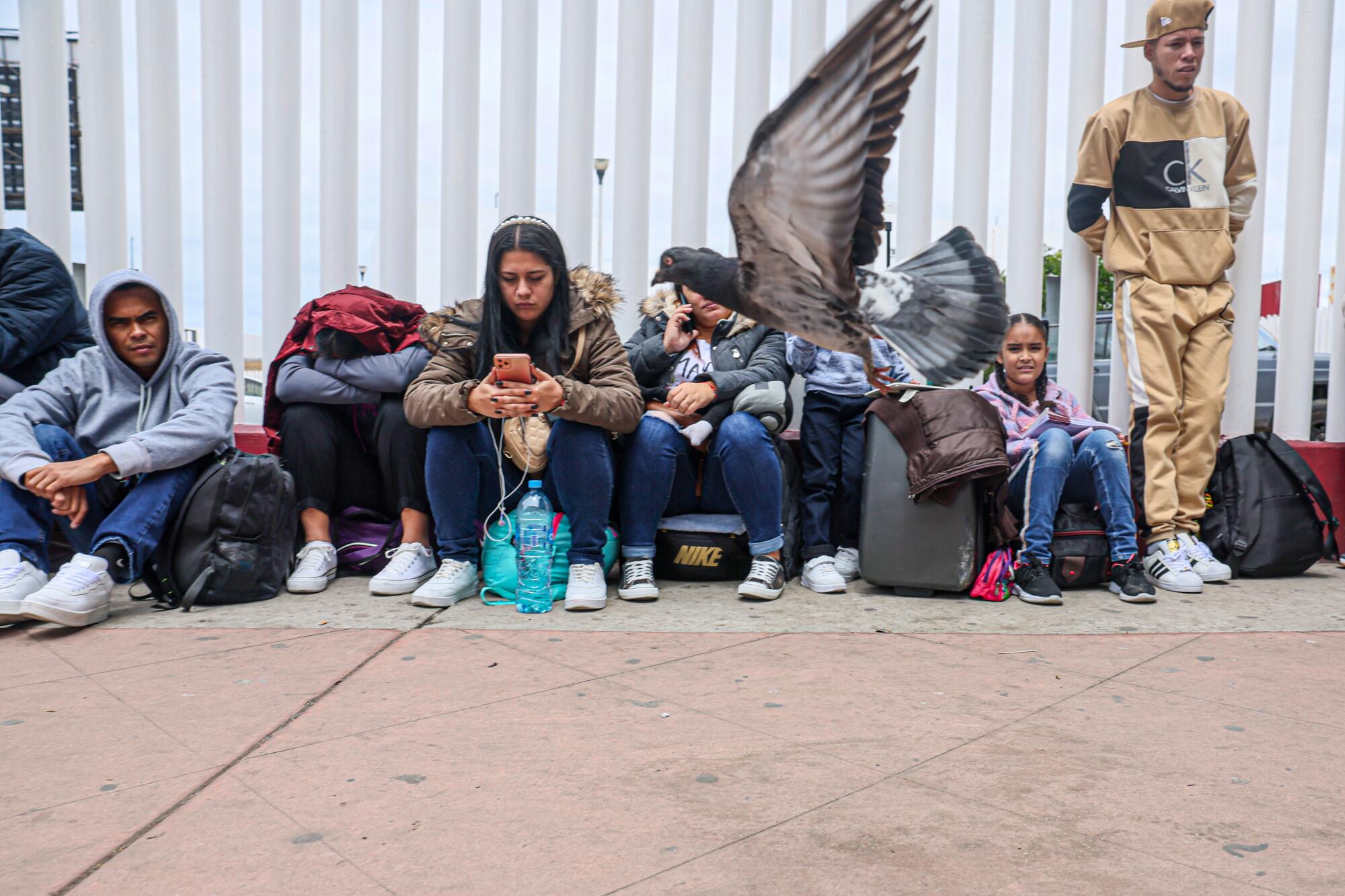
Guerrero re-registered with CBP One — as required after missing an appointment — and continued to log in each day to play what many migrants have taken to calling “the asylum lottery.”
: :
The biggest critics of the app are not immigrant rights activists, but Republican lawmakers.
They accuse the Biden administration of scheming to let in migrants fleeing economic hardship — which is not a valid reason for asylum under U.S. law.
CBP One is “facilitating mass illegal immigration into the United States,” Rep. Dan Bishop (R-N.C.) said in March at a hearing of a Homeland Security subcommittee that he chairs.
At the same hearing, Rep. Marjorie Taylor Greene (R-Ga.) scolded the CBP’s Sabatino: “The CBP app is like a welcoming app: ‘Welcome to America! Come on in!’ You aren’t vetting people.”
In response, Sabatino said that migrants using the app must provide biographical details and selfies that allow for a “robust” screening against law enforcement criminal records, watch lists, intelligence reports and biometric databases.
But critics question how much vetting can be done of people from so many different nations, including some with limited or no diplomatic relations with the United States.
“You’re letting in hundreds of thousands of people just because they made an online appointment and cleared some elementary database checks,” said Mark Krikorian, executive director of the Center for Immigration Studies, a Washington research group that seeks reduced immigration. “You’re just encouraging more and more people to come to the border.”
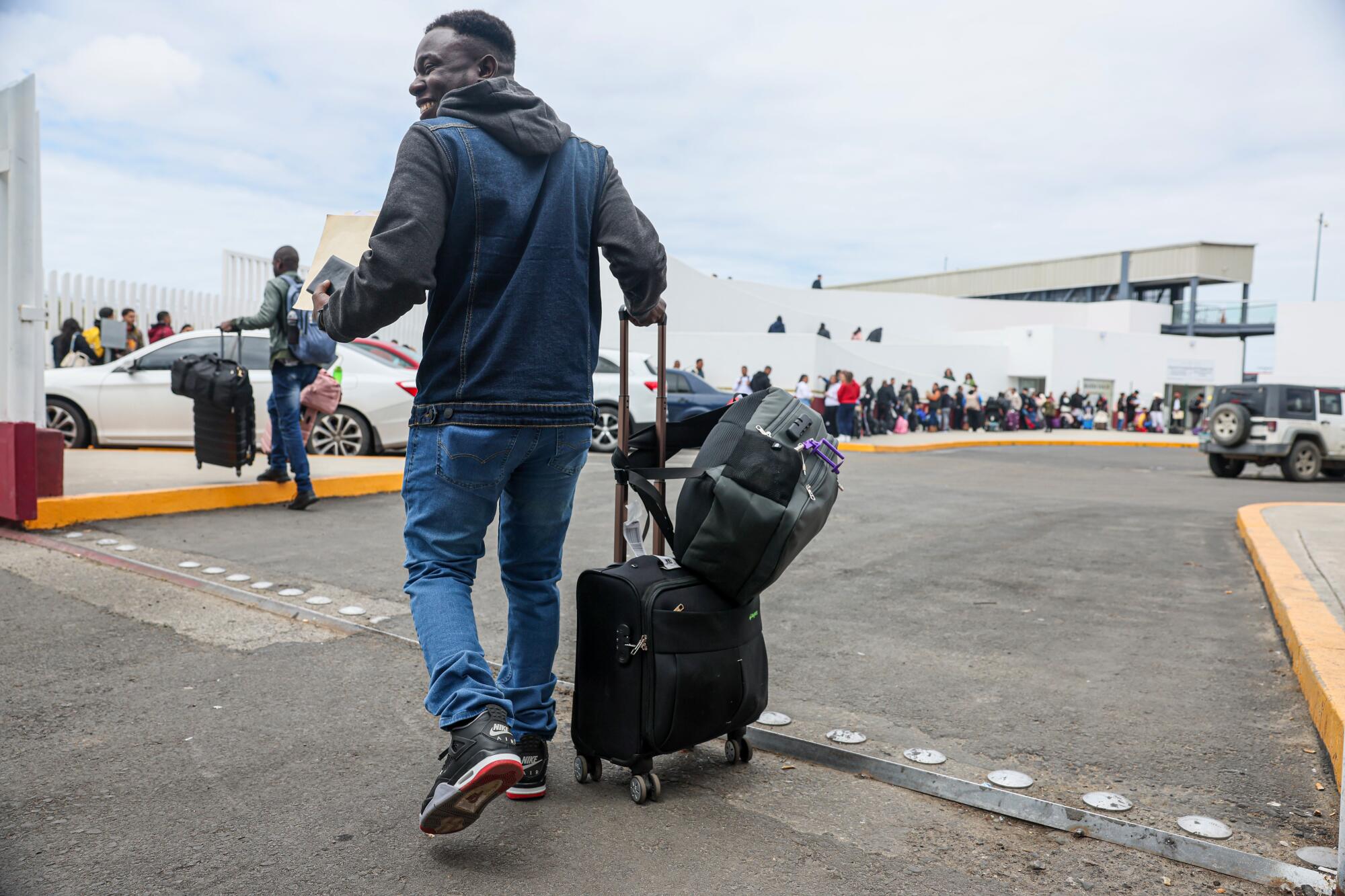
About 95% of migrants who schedule appointments through the app are allowed into the United States, according to the CBP.
The vast majority go on to petition for asylum. That triggers a review process to determine whether applicants have a legitimate fear of persecution back in their homelands because of their race, religion, nationality, social group or political opinion.
Losing an asylum case does not ensure that someone leaves the country.
According to the Executive Office for Immigration Review, which oversees immigration courts, a third of the almost 500,000 people facing deportation in fiscal year 2023 failed to appear for final hearings and were ordered removed in absentia.
: :
In San Diego, migrants emerging from their CBP One interviews on a recent afternoon stepped onto U.S. territory under a brilliant sun. Many seemed stunned, and somewhat disoriented, to have reached the United States.
“We don’t have to worry anymore,” said Nelson Díaz, 42, a car mechanic from outside Havana who crossed with his cousin and two friends from Cuba.
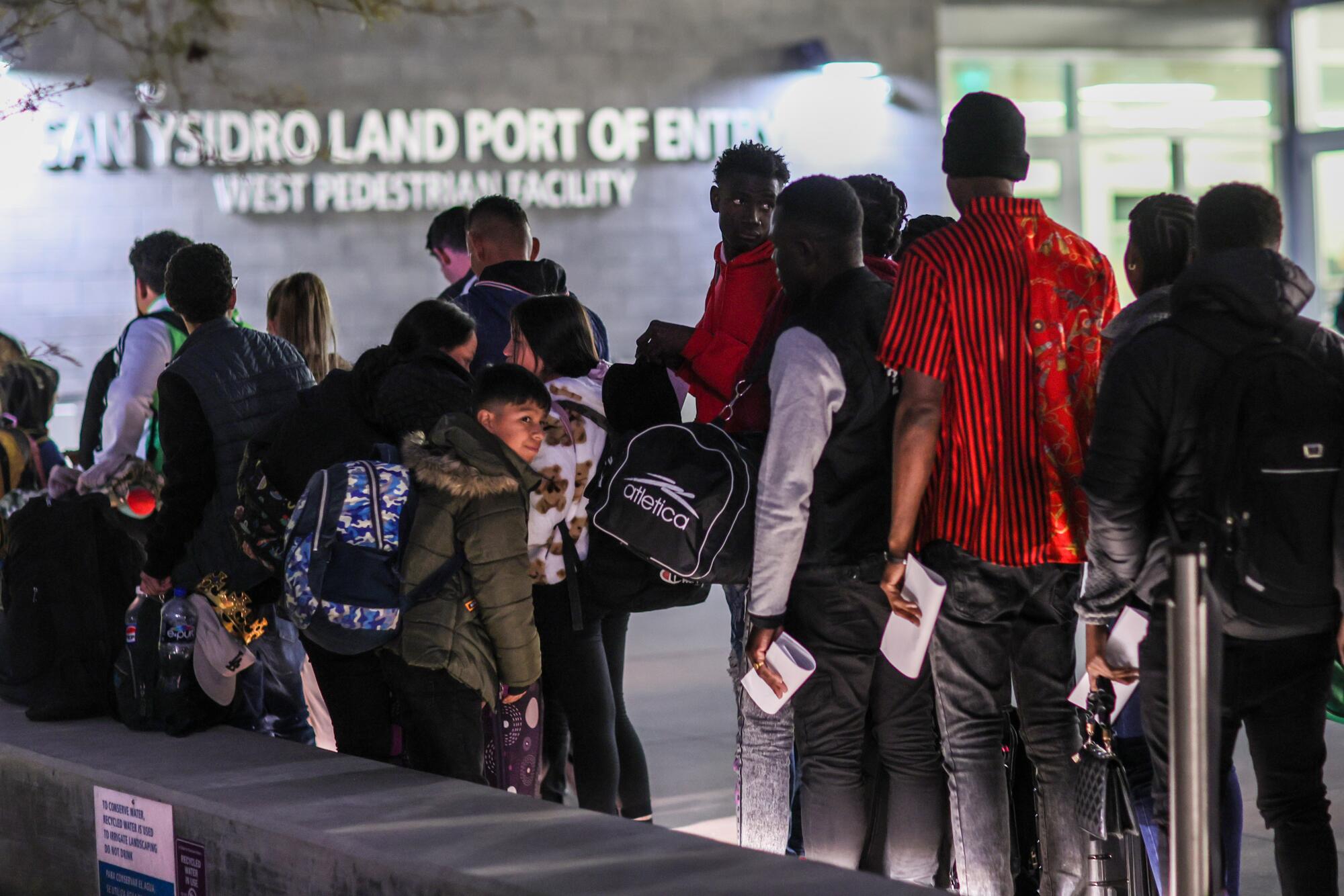
On the U.S. side of the border, they took photos and selfies against the backdrop of fluttering U.S. and California flags. A few yards out of the frame the 30-foot-tall border wall loomed.
The four soon headed for the San Diego airport for a flight to Miami to reunite with friends and relatives as they await hearing dates later this year or in 2025.
Another recent arrival explained how she and her family had waited for six months at a shelter in Tijuana, cooking and cleaning to defray costs while she repeatedly logged on to the app to try for an appointment for herself, her husband, son, daughter-in-law and two friends.
“I tried every single day,” said Wendy More, 40, who had fled Guatemala. “Sometimes at 11 in the morning. Sometimes at 3 a.m. Then I saw someone on social media say 5 o’clock in the morning was the best time, so I tried that. And, with the will of God, five days later we got our appointment.”
The six were now staying with More’s sister in Riverside County while they seek work permits and formally file for asylum based on violence they said they suffered back home.
“We all feel more secure, more tranquil, not having to hide from anyone in this country,” More said. “We battled but we made it. It’s mostly a question of patience.”
As for Guerrero, who made it to his friend’s home in Houston with his wife and son, he said in a telephone interview that he has lined up a job as a handyman for when his work permit comes through.
The family opened a bank account and is trying to find a lawyer to help with their asylum petition, which Guerrero said will be based on his opposition to Venezuela’s socialist government.
His wife is contemplating going back to school. The couple’s son is enrolled in sixth grade and is learning English.
“The boy is doing well, he wants to erase from his memory what happened to us in Mexico,” Guerrero said. “He was so happy when he began his classes.”
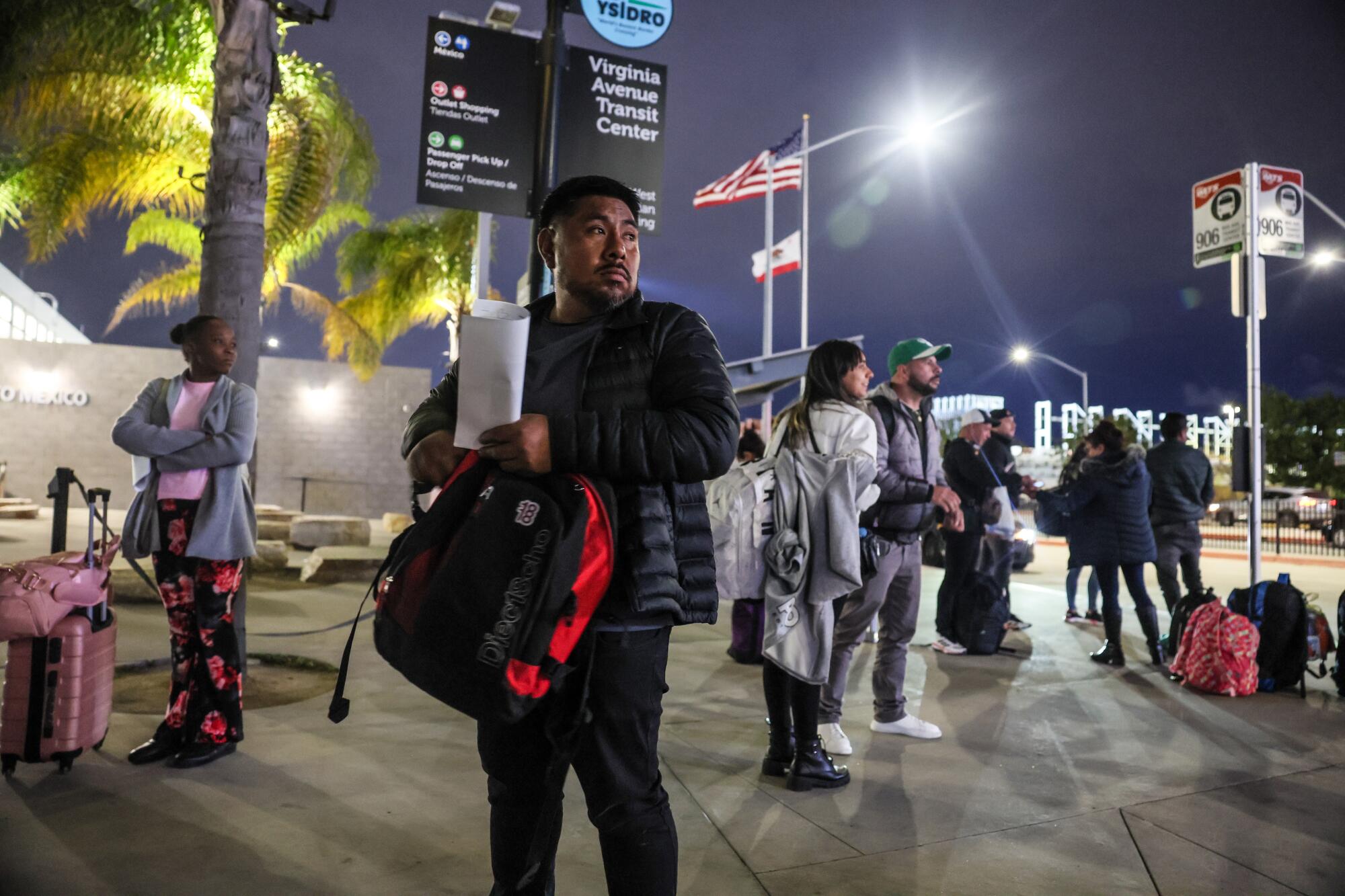
Guerrero has told friends in Venezuela, including his brother — a cellphone repairman — that the journey to the United States is worth it.
“It’s a hard trip, very difficult, you have to be ready,” Guerrero said. “You need resolve. Also, you need an appointment.”
Special correspondent Gabriela Minjares in Ciudad Juárez contributed to this report.
The son of slain presidential candidate Luis Donaldo Colosio asked that his killer be pardoned, but President Andrés Manuel López Obrador refused.
More to Read
Sign up for Essential California
The most important California stories and recommendations in your inbox every morning.
You may occasionally receive promotional content from the Los Angeles Times.
